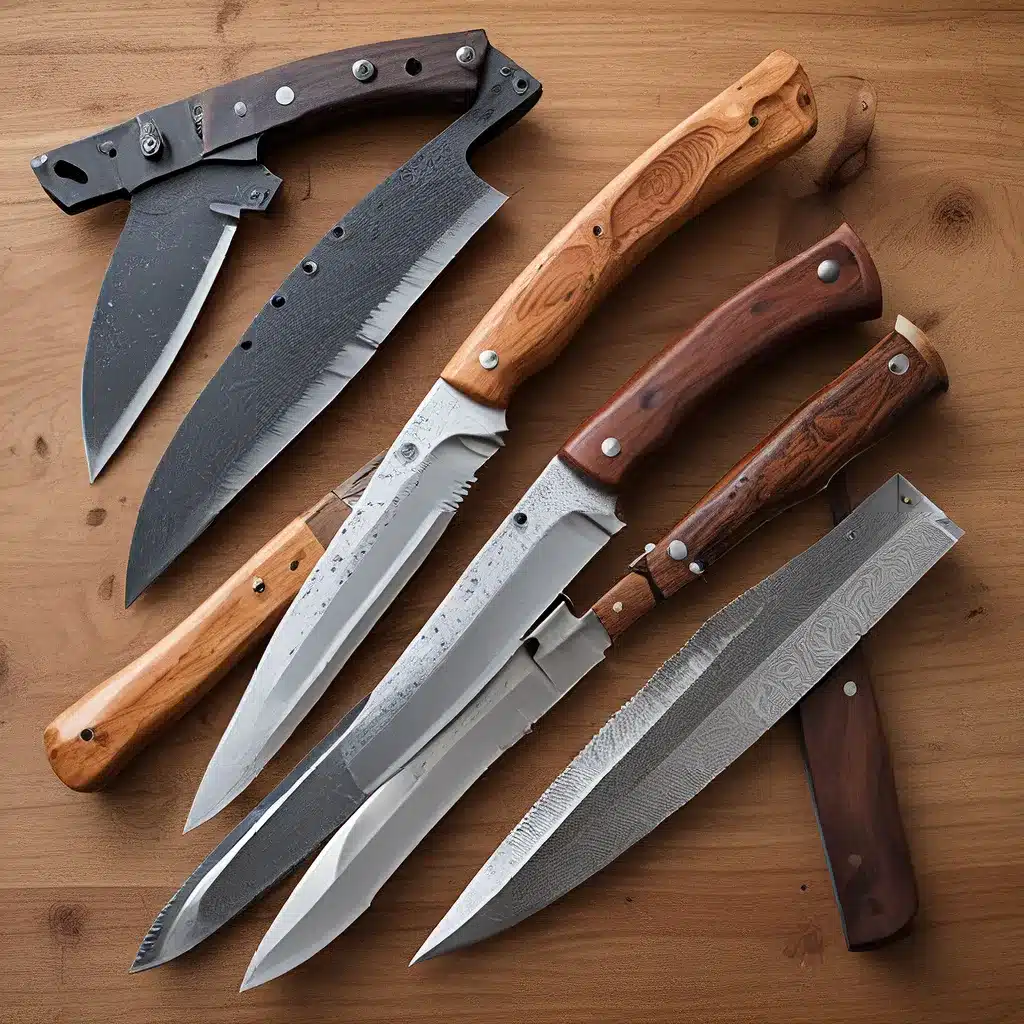
The Humble Beginnings of Knives
As far back as ancient times, knives have been an essential tool for human civilization. From the rudimentary stone blades used for hunting and gathering, to the sophisticated metal knives of today, the evolution of knife design is a fascinating journey through history.
In the earliest days, our ancestors relied on simple stone tools for a variety of tasks – cutting, slicing, and scraping. These early knives were nothing more than sharpened rocks, but they represented a significant leap in human innovation and problem-solving. As metalworking techniques advanced, the first metal knives emerged around 3000 BCE. Although still relatively basic in design, these early blades marked the beginning of a new era in knife technology.
Over the centuries, knives became more specialized, with different types of blades emerging to suit specific tasks. The modern chef’s knife, for instance, didn’t take shape until the 19th century. This versatile cutting tool, with its curved blade and comfortable handle, was a game-changer for professional and home cooks alike. The chef’s knife’s ability to efficiently chop, slice, and dice made it an indispensable part of any well-equipped kitchen.
The Evolution of Knife Design
As time passed, knife design continued to evolve, driven by the changing needs of users and advancements in materials and manufacturing. The handles of early knives were typically made of wood, but modern designs often feature ergonomic handles crafted from a variety of materials, including rubber, plastic, and metal.
In addition to handle materials, the blades themselves have undergone significant changes. One notable innovation is the hollow-ground edge, which helps prevent food from sticking to the blade during use. Another design element is the bolster – a thickened area of metal between the blade and the handle that adds weight and balance to the knife.
| Traditional Knife Design | Modern Knife Design |
|---|---|
|
– Wooden handle – Straight blade – No specialized features |
– Ergonomic handle (rubber, plastic, metal) – Curved blade – Hollow-ground edge – Bolster for balance |
While many modern knife designs have embraced the latest advancements in technology and materials, some manufacturers have sought to blend tradition and modernity. Herman Knives, for example, has created a line of knives that showcase a unique blend of old-world craftsmanship and cutting-edge innovation.
The KUMA Difference
One brand that has truly embraced the evolution of knife design is KUMA. Their knives are a testament to the harmonious fusion of tradition and modernity, showcasing the best of both worlds.
KUMA knives are crafted using high-quality materials, such as high-carbon stainless steel, which provides a razor-sharp edge that stays sharp longer. The ergonomic handles are designed for comfort and ease of use, with a non-slip grip that enhances safety and control.
But KUMA’s designs go beyond just practical considerations. They also feature unique elements that set them apart from the competition. The KUMA Classic Multi-Purpose Chef Knife, for instance, has a straight blade almost like a slicer, allowing for efficient cutting, chopping, and slicing. Meanwhile, the KUMA Japanese Damascus Steel Chef Knife showcases a stunning layered pattern on the blade, created through a specialized technique that also makes the steel particularly hard, durable, and edge-retentive.
As the KUMA team explains, their commitment to quality and innovation is evident in every knife they produce, making them a top choice for both professional chefs and home cooks.
The Cutting Edge of Knife Design
The evolution of knife design is a testament to the ingenuity and problem-solving skills of humanity. From the earliest stone tools to the high-tech blades of today, the journey of the humble knife has been one of constant refinement and improvement.
As we look to the future, it’s exciting to imagine what new advancements and innovations might be in store for the world of knife design. Will we see even more sophisticated materials, revolutionary blade shapes, or cutting-edge (pun intended) technologies that change the game once again?
One thing is certain: the knife is a tool that has been integral to human civilization for millennia, and its evolution will undoubtedly continue to shape the way we interact with the world around us. Whether you’re a professional chef, a home cook, or simply someone who appreciates the art of knife-making, the honing history of this essential tool is a fascinating story worth exploring.
So, the next time you slice, dice, or chop with your favorite knife, take a moment to appreciate the rich tapestry of human ingenuity and craftsmanship that has gone into its design. Who knows? You might just be holding a piece of history in your hands.


